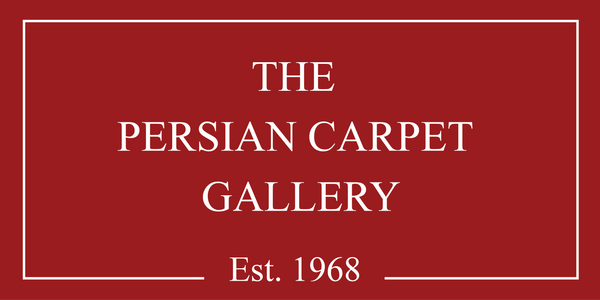Unsure about purchasing a rug online? Try it at home for FREE!
We understand that choosing the perfect carpet from just the images can be challenging. If you're unsure about your choice, simply send the SKU or the link of the carpet to info@pcgaustralia.com or call 1800 2000 28 and we'll make things easier for you with a free home trial Australia-Wide.
Persian Hamadan Village Rug
Stock No. ADL-232-001714
Size(m): 2.00×1.27
This extraordinarily beautiful central medallion rug, handcrafted from wool by the skilled artisans of Hamadan, Persia (modern-day Iran), is a testament to traditional craftsmanship. The carpet features a striking central motif resembling a flower with white petals set against a background so dark it appears almost black or deep indigo. This dark center is surrounded by a circular orbit of four small motifs that resemble the both motif.
The Boteh pattern, also known as the paisley design, holds deep cultural significance in Persian carpets, reflecting both artistic and symbolic meanings that have evolved over centuries. Here’s an exploration of its cultural importance:
Origins and Evolution
1. Historical Roots: The Boteh pattern is believed to have originated in ancient Persia, with roots tracing back to the Sassanian Empire (224-651 AD). It gained prominence during the Safavid dynasty (1501-1736 AD), a period known for significant developments in Persian art and carpet weaving.
2. Symbolism: The Boteh motif resembles a teardrop or leaf shape with a curved upper end, often compared to a cypress tree (a symbol of resilience and life) or a flame (representing eternal life and spirituality). The exact meaning can vary, but it consistently symbolizes growth, fertility, and prosperity.
Cultural Significance
1. Symbol of Fertility and Abundanc: The Boteh is frequently interpreted as a symbol of fertility, abundance, and good fortune. In many Persian carpets, it is intricately woven to convey wishes for prosperity and growth, making it a popular motif in household items and ceremonial textiles.
2. Mystical and Spiritual Connotations: In Persian culture, the Boteh is also imbued with mystical meanings. It often represents the eternal cycle of life and the divine flame, signifying the soul's journey and spiritual enlightenment. This dual representation of physical and spiritual growth adds a layer of depth to its presence in carpets.
3. Versatility in Design: The Boteh pattern’s adaptability has allowed it to flourish in various artistic forms beyond carpets, including textiles, pottery, and jewelry. Its ability to fit seamlessly into complex designs and its inherent beauty have made it a timeless element in Persian art.
Artistic Representation
1. Varied Interpretations: The Boteh motif can appear in numerous forms, from simple, singular designs to elaborate, repetitive patterns. This versatility allows weavers to infuse their personal artistic touch and regional styles, making each representation unique.
2. Color and Composition: In Persian carpets, the Boteh is often surrounded by intricate floral and geometric patterns, harmonizing with the overall design. The use of natural dyes creates vibrant and varied color palettes, enhancing the motif’s visual appeal and cultural resonance.
Global Influence
1. Spread to Other Cultures: The Boteh pattern transcended Persian borders, becoming especially popular in Indian textiles and eventually making its way to Western fashion in the 18th and 19th centuries, where it became known as "paisley."
2. Symbol of Cultural Exchange: The widespread adoption of the Boteh pattern highlights the cultural exchanges facilitated through trade routes such as the Silk Road. Its presence in various cultures underscores its universal appeal and symbolic richness.
The Boteh pattern in Persian carpets is more than a decorative element; it is a symbol rich with cultural, spiritual, and historical significance. Its representation of growth, fertility, and the eternal cycle of life, combined with its aesthetic beauty, makes it a cherished motif in Persian art. Whether viewed as a symbol of prosperity or a mystical emblem, the Boteh pattern continues to captivate and inspire, reflecting the profound artistry and cultural heritage of Persian carpet weaving.
This carpet has more to offer than the boteh pattern. Encircling the central flower motif is a band of very dark blue, which contains extensions of the central medallion reaching north and south, adorned with stylized flowers. This blue band is particularly fascinating, as it features intricate boteh patterns that lack symmetry between the north-south axis but are mirrored on the east-west axis. For example, the top left and right sections of this band each display twelve boteh motifs, while the bottom sections each display thirteen, adding a delightful and unique charm to the rug.
The vibrant red base color of the inner motif contrasts beautifully with the more muted red tones found in the corner areas and along the sides of the field of the carpet. The palette is a harmonious blend of blues, whites, tans, reds, and greens, which collectively impart vitality and beauty to the rug.
The stylized flowers sprinkled throughout the carpet, particularly along the main guard borders, convey a clear message of spring. These floral motifs symbolize the earth's bounty and the renewal that comes after winter, evoking a sense of optimism and a time for growth. The presence of flowers in various colors emphasizes this theme of renewal and abundance.
Whether placed in a modern or traditional interior, this rug will serve as a captivating accent point. Its intricate designs and rich colors will provide endless pleasure and become a cherished legacy for future generations. Make this exquisite Persian Hamadan village rug your own today, and enjoy the timeless beauty and cultural significance it brings to your home.


